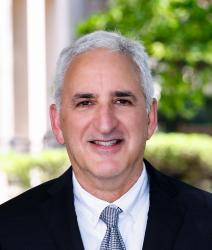In the wake of the terrorist attack on September 11, Congress and the Administration are debating the best way to stimulate the economy through spending and tax changes. The general principle that a stimulus package should include only temporary items—that is, items that sunset after one year—has been endorsed by the Democratic and Republican leaders of the House and Senate Budget Committees.
In contrast, the Administration has proposed a series of options that would be permanent for firms and long-lasting (up to four years) for high-income individuals, but only temporary for low-income households. This note offers seven reasons why the most effective stimulus package would contain only temporary changes to tax or spending programs.
1. The economy is in a short-term downturn; long-run prospects remain strong.
The nature of the problem at hand is that the economy is experiencing a jolt, or temporary slowdown, and needs to return to its long-term course. No one is suggesting that the long-term course has been significantly altered from its previous path or that it should be. As Alan Greenspan noted in Congressional testimony on September 20, “as we struggle to make sense of our profound loss and its immediate consequences for the economy, we must not lose sight of our longer-run prospects, which have not been significantly diminished by these terrible events.”
Thus, the right policy response would aim to get the economy back on its long-term path. It is hard to see why a temporary problem merits a permanent solution.
2. The best stimulus would generate the most new activity, at the least long-term cost.
The best way to stimulate the economy is to maximize the “bang for the buck” of any proposed policy change. The “bang” is the impact on the economy in the near term and should be maximized; the “buck” is the long-term cost of the policy and should be minimized. Policies that maximize the bang for the buck (a) focus on new household spending (such as through a household tax rebate) or (b) new business investment (such as through investment tax credits for new investment and/or accelerated depreciation of new investment). As the next two points indicate, temporary policies are a rare policy two-fer: they can have a bigger short-term effect and a smaller cost than permanent policies.
3. Temporary policies can have a bigger “bang” than permanent policies.
Temporary investment incentives are generally considered more effective for short-term stimulus than permanent ones. The temporary incentives lead firms to substitute investment into the period in which it enjoys a larger tax benefit. This point is not controversial. It is endorsed, for example, by Glenn Hubbard, the Chair of the President’s Council of Economic Advisers. In a paper he co-authored with Kevin Hassett, Hubbard argued that, “Temporary investment incentives can have even larger short-run impacts on investment than permanent investment incentives…”
4. Temporary items reduce revenues by less than permanent items.
This has two important implications. First, it means that a temporary incentive will have a smaller impact on long-term interest rates. That is important because any increase in interest rates created by a stimulus package would hurt investment, the stock market, housing, and other sectors of the economy, and thus offset some of the direct effects of the stimulus. Second, for any given overall cost and therefore any given impact on interest rates, a longer-term package will be less efficient in generating stimulus in the short run than a temporary one, since more of its incentives are loaded for a period well beyond the likely downturn and therefore less is devoted to the immediate period.
5. Focusing on temporary changes limits the potential inequities that may occur.
The Administration, for example, would like to give permanent tax cuts to businesses, long-lasting ones (up to four years) for high-income households, but only temporary one-year cuts for low-income households. These patterns are difficult to justify on equity grounds.
6. Focusing on temporary changes limits the potential dangers from inappropriate policies.
Allowing some permanent tax or spending changes opens the door to consideration of a wider array of permanent changes that have little or no stimulative effect. It is much more straightforward to limit the stimulus package to temporary items than to evaluate the costs and benefits of a wide array of potential permanent changes. Policy-makers should not divert attention from more immediate needs in order to debate the merits of various permanent changes in taxes or spending programs, when temporary changes are likely to be more stimulative in any case.
7. Focusing on temporary changes avoids misleading or dishonest budget calculations.
The Administration has been proposing permanent changes but only reporting the one- or two-year costs. For example, eliminating the corporate alternative minimum tax would reduce revenue over the next 10 years by approximately $18 billion.
It is possible, however, that the Administration will want to count only the costs in the first year or two in determining the overall stimulus “budget.” Limiting the stimulus package to temporary changes in tax or spending programs increases the chances that the accounting of the package will be transparent.
The conclusion, as both the Chairman and Ranking Members of the House Budget Committee and the Senate Budget Committee have emphasized, is that any stimulus package should contain only temporary items.
The Brookings Institution is committed to quality, independence, and impact.
We are supported by a diverse array of funders. In line with our values and policies, each Brookings publication represents the sole views of its author(s).




